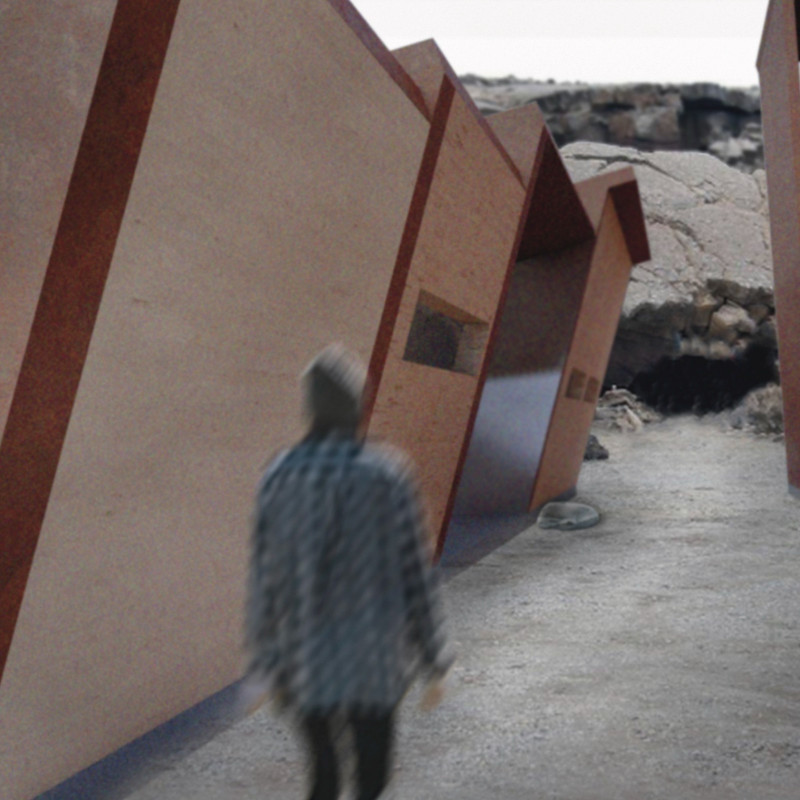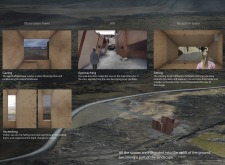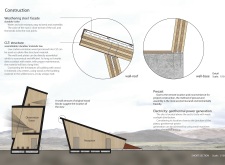5 key facts about this project
The design is located in a rift valley, characterized by its distinctive geological features. The layout consists of two buildings that reflect the natural landscape, each serving a different function. The buildings are oriented toward Karlagjá and Kvennagjá, allowing visitors to appreciate the surrounding scenery while interacting with these architectural forms. Overall, the design aims to create a meaningful experience that connects people with the environment.
Spatial Organization
The ground floor effectively houses essential functions related to water and electricity. This arrangement supports efficient pipeline management and reduces energy waste. Separating the reception area from the daily open space into two distinct structures enhances practicality. This approach allows for better organization of activities and creates more private areas for visitors, improving their overall experience on-site.
Observation Tower
At the heart of the design is an observation tower that invites exploration and contemplation. Its alignment draws focus to the cave, allowing for an engaging transition as visitors approach. Inside the tower, varied heights between sitting and standing areas draw a clear line between the internal and external views. This thoughtful design encourages visitors to immerse themselves in the landscape, with panoramic views of Kvennagjá becoming a central focal point.
Materiality and Construction
Weathering steel is chosen for its durability and visual qualities, matching the color and texture of the local rocks. This material serves to protect the structure while maintaining a connection with its setting. Cross-laminated timber, known for its low carbon emissions, forms another key element of the buildings' structure. Its flexibility and ease of assembly lend themselves to an efficient construction process, especially relevant in a remote location above the Arctic Circle.
Geothermal Energy
The design also incorporates a geothermal energy system, taking advantage of the specific geological characteristics in the area. This technology provides a sustainable power source that aligns with the local climate. By addressing the energy needs in this natural setting, the project ensures that the buildings coexist harmoniously with their surroundings.
Large vertical frames in the observation tower create dynamic views, allowing visitors to witness changing weather patterns. This feature enhances the experience by emphasizing the shifting relationship between architecture and nature, while also encouraging an appreciation for the elements at play in the landscape.






















































